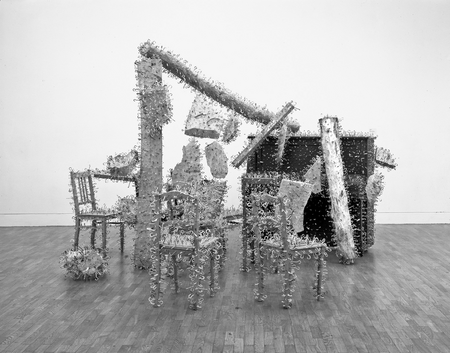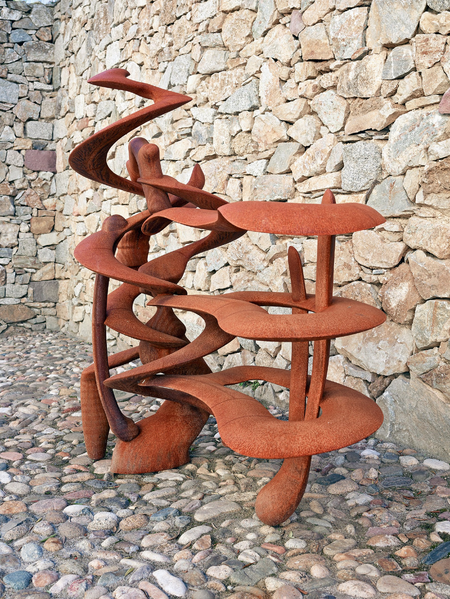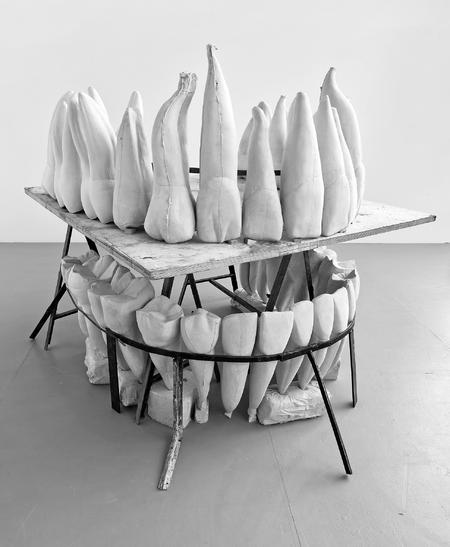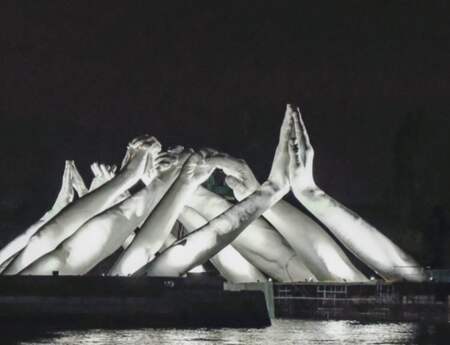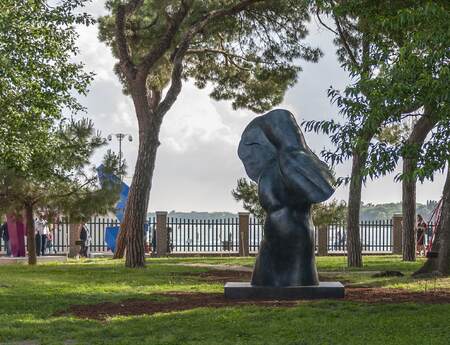The infinite form - Anthony Cragg
Book review: Anthony Cragg – Endless Form, Fondazione Constantino Nivola/Museo Nivola, June 2018.
Appearance, the process of creation, the site of observation/reception and the status of visual historiography, all together define a work of art. The character of Anthony Cragg’s work shows a long experimental development phase. Under the dogma to create a better comprehension of his works inclusive of the world in total, he uses a Heraclean approach releasing the unadulterated cosmological energy, the inner force of a material. He uses as his means, the forms he defines as being free within a compressed time-space sequence. His main subjects are movement, action and metamorphosis. Like a skin that envelopes what is hidden underneath, the surface of his works indulges in a deep look inside. One must necessarily make use of and further enhance his experience of reality to penetrate this surface and to fully understand the object in question. This keeps us driven to pursue enquiring further into the creative process. However, sculpture as a tangible projection of psychological and emotional content can do much more – establish communication and connection to space and delve further into other works as well.
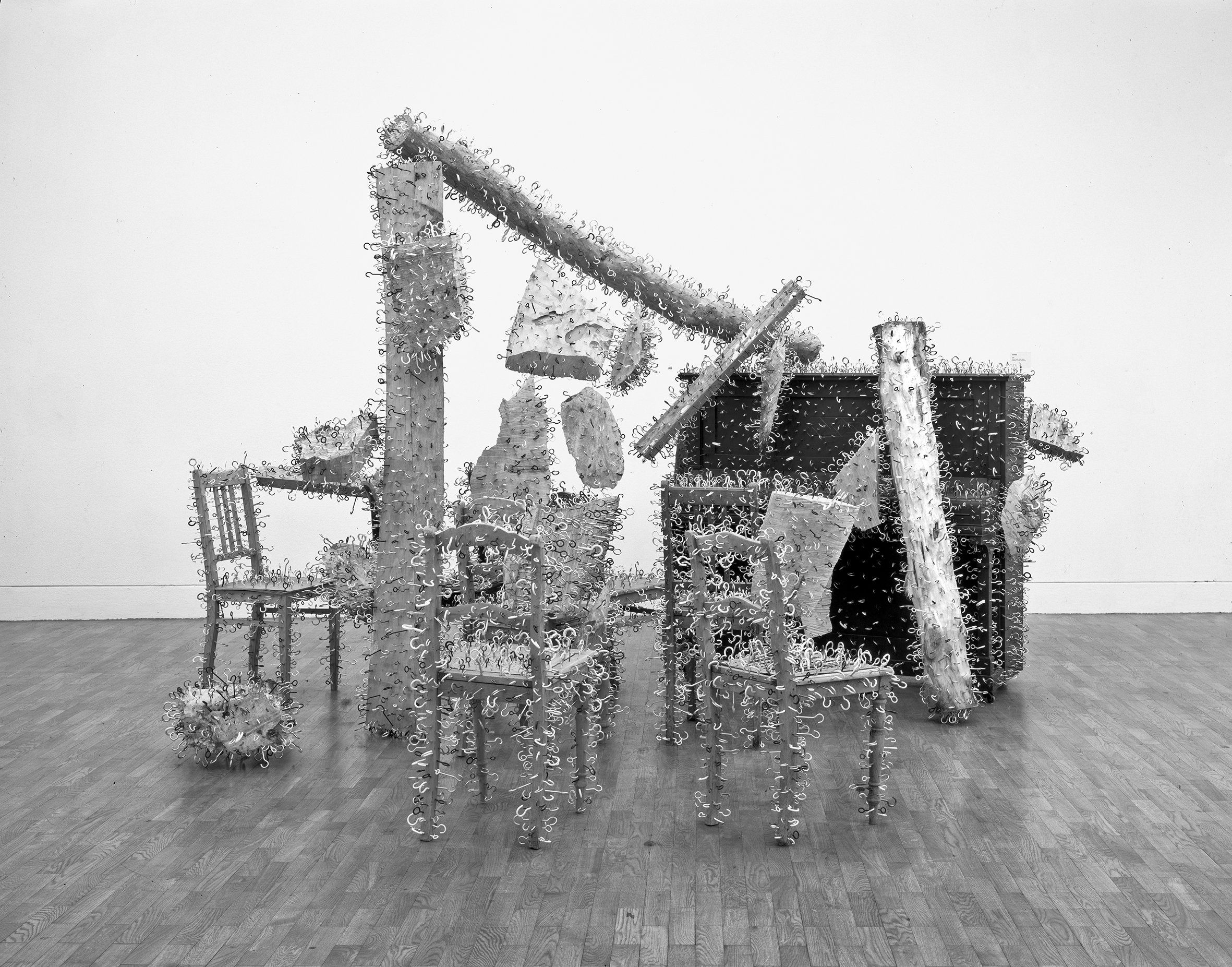
Photo: Tom Powel (Page 81)
There is a book which goes by the same name as the exhibition “Anthony Cragg – Endless Form”, organized in Sardinia in June 2018, that references to the artworks in the said exhibition. It discusses in its three chapters the perception of his works, the process of development of the artist from the early 1960s to this date and classifies his work in the context of the history of art. „Every kind of matter is its own world, its own micro-cosmos. Every matter decay into particles, every particle into atoms and every atom into whatever. “In the first part of the book, Anthony Cragg asks for intuitive perception to fathom the interplay between micro and macro cosmos. His works assume a form of biomorphism – a fusion of geometry and the organic substances.
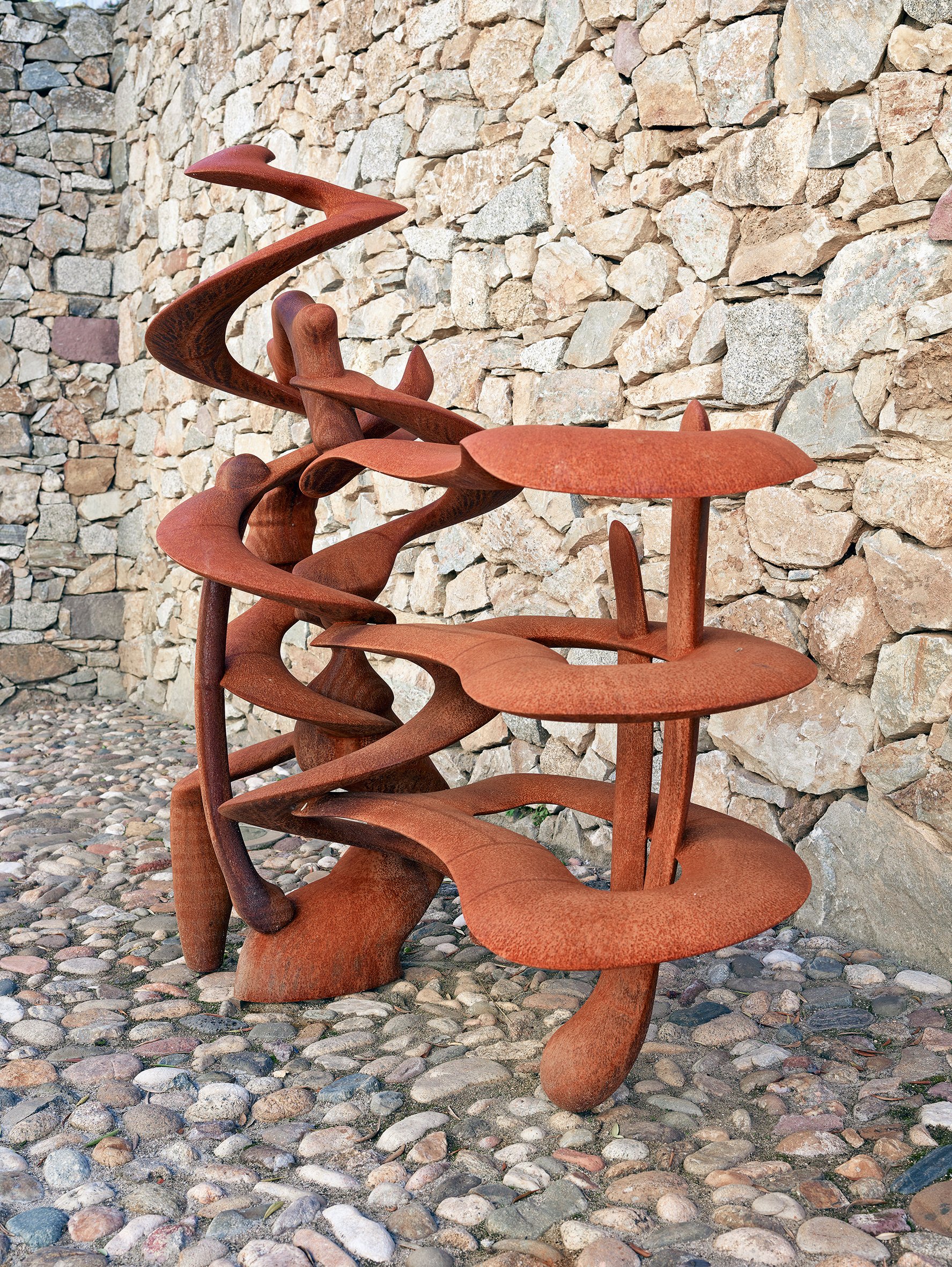
Photo: Michael N. Richter (page 15)
Plastics, fiberglass, glass, wood, laminates, steel, iron and common bronze are designed completely rationally by the artist. This is quite an unconventional way of working for an artist whose works rely on intuitive perception. As described in the second chapter of the book, Cragg initially trained as a technician, followed by a collaboration with a chemistry laboratory, only after which he turned to art. This explains his technical way of working. However, his earlier works still lacked expression. The purely conceptual-minimalist aesthetics disappointed him very quickly. Thus, for him, form developed as an expressive constant and his oeuvre demonstrated an opposition to both nature and industry. His two-dimensional works, the plastic mosaics attracted international interest for the first time when he won the 1988 Turner Prize as a representative of Great Britain at the Venice Biennale. Despite his success, he did not stop there, but ventured into further development in the third dimension. He was motivated in profiling of molecules, cellular formations, crystal clusters, terrestrial and marine organisms and even human organs that are reduced to absurdity. Here the reader finds a good review of the development phases of the artist and the basic characteristics of his work. The year 1988 changed things even more for Cragg. He received lectureship at the Academy of Arts in Dusseldorf (Kunstakademie Düsseldorf) and radically altered his artistic practice in the years to follow. He extended his experimental works to using morphing techniques and 3D modeling. In addition, he started working purely analytically again, in so-called holotypes – sculpture families, which although have elements of connection, but in no way do they represent archetypes. The metamorphosis of his works continues to mature: the object can be a figure, a head or an organ, depending on the perception of the observer. In the third chapter deals with the art-historical context of Cragg, by comparison to contemporary developments in art.
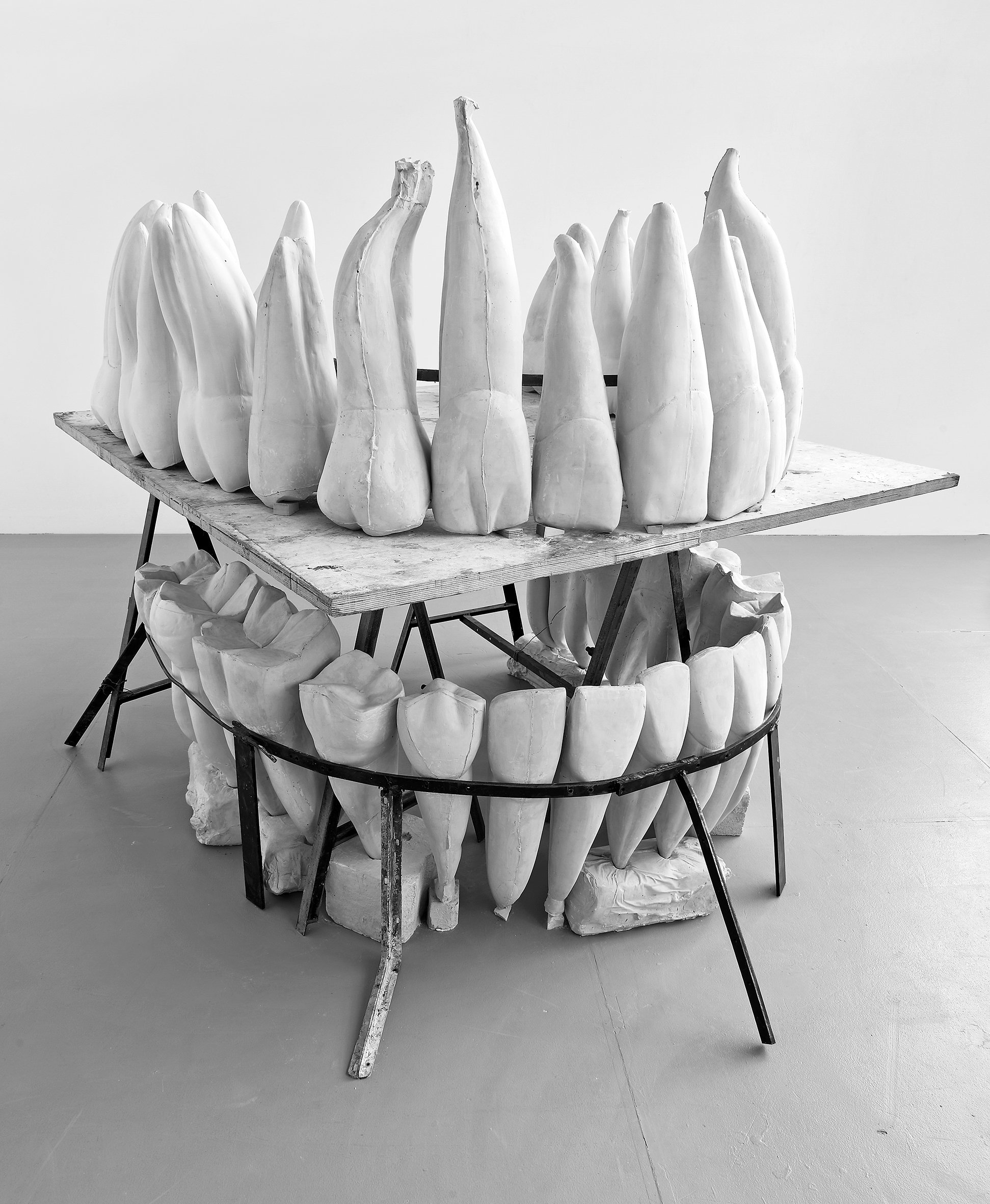
Photo: Michael N. Richter (page 83)
The full color illustrations of the book testify to the written words. In its entirety, the book “Anthony Cragg – Infinite Form” is a good introduction to the creative world of the artist, but at the same time it calls for more. The colored illustrations provide the reader a good idea of the sculptures, but it is still necessary to look at the works in real life. The artist would have been more interested in his development and creative process, which are clearly missing in the book.
Anthony Cragg - Endless Form
Edited by Giuliana Altea and Antonella Camarda. With an essay by Mark Gisbourne
In cooperation with Museo Nivola, Orani, Sardinia
Verlag Scheidegger & Spiess
ISBN 978-3-85881-834-8
Text in English
Cover picture: Caught Dreaming, 2006, bronze, 159 x 285 x 153 cm. © Anthony Cragg | Photo: Michael N. Richter (Seite 6-7)

